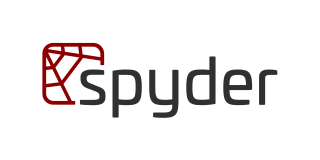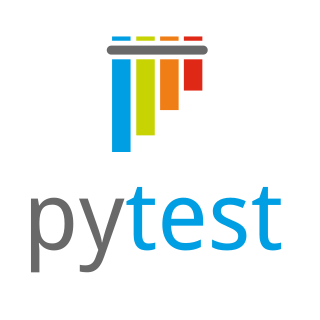Related Research Articles

In computer programming, a macro is a rule or pattern that specifies how a certain input should be mapped to a replacement output. Applying a macro to an input is known as macro expansion. The input and output may be a sequence of lexical tokens or characters, or a syntax tree. Character macros are supported in software applications to make it easy to invoke common command sequences. Token and tree macros are supported in some programming languages to enable code reuse or to extend the language, sometimes for domain-specific languages.
In computing, serialization is the process of translating a data structure or object state into a format that can be stored or transmitted and reconstructed later. When the resulting series of bits is reread according to the serialization format, it can be used to create a semantically identical clone of the original object. For many complex objects, such as those that make extensive use of references, this process is not straightforward. Serialization of objects does not include any of their associated methods with which they were previously linked.
In computer science, control flow is the order in which individual statements, instructions or function calls of an imperative program are executed or evaluated. The emphasis on explicit control flow distinguishes an imperative programming language from a declarative programming language.
In some programming languages, eval, short for the English evaluate, is a function which evaluates a string as though it were an expression in the language, and returns a result; in others, it executes multiple lines of code as though they had been included instead of the line including the eval. The input to eval is not necessarily a string; it may be structured representation of code, such as an abstract syntax tree, or of special type such as code. The analog for a statement is exec, which executes a string as if it were a statement; in some languages, such as Python, both are present, while in other languages only one of either eval or exec is.
In computing, gettext is an internationalization and localization system commonly used for writing multilingual programs on Unix-like computer operating systems. One of the main benefits of gettext is that it separates programming from translating. The most commonly used implementation of gettext is GNU gettext, released by the GNU Project in 1995. The runtime library is libintl. gettext provides an option to use different strings for any number of plural forms of nouns, but this feature has no support for grammatical gender. The main filename extensions used by this system are .POT, .PO and .MO.
Plain Old Documentation (pod) is a lightweight markup language used to document the Perl programming language as well as Perl modules and programs.
Embedded Ruby is a templating system that embeds Ruby into a text document. It is often used to embed Ruby code in an HTML document, similar to ASP and JSP, and PHP and other server-side scripting languages. The templating system of eRuby combines Ruby code and plain text to provide flow control and variable substitution, thus making the combined code easier to maintain.

Jinja is a web template engine for the Python programming language. It was created by Armin Ronacher and is licensed under a BSD License. Jinja is similar to the Django template engine but provides Python-like expressions while ensuring that the templates are evaluated in a sandbox. It is a text-based template language and thus can be used to generate any markup as well as source code.
In programming, a docstring is a string literal specified in source code that is used, like a comment, to document a specific segment of code. Unlike conventional source code comments, or even specifically formatted comments like docblocks, docstrings are not stripped from the source tree when it is parsed and are retained throughout the runtime of the program. This allows the programmer to inspect these comments at run time, for instance as an interactive help system, or as metadata.

The syntax of the Python programming language is the set of rules that defines how a Python program will be written and interpreted. The Python language has many similarities to Perl, C, and Java. However, there are some definite differences between the languages. It supports multiple programming paradigms, including structured, object-oriented programming, and functional programming, and boasts a dynamic type system and automatic memory management.
Haxe is a high-level cross-platform programming language and compiler that can produce applications and source code for many different computing platforms from one code-base. It is free and open-source software, released under an MIT License. The compiler, written in OCaml, is released under the GNU General Public License (GPL) version 2.
This comparison of programming languages compares the features of language syntax (format) for over 50 computer programming languages.

In computer programming, a comment is a programmer-readable explanation or annotation in the source code of a computer program. They are added with the purpose of making the source code easier for humans to understand, and are generally ignored by compilers and interpreters. The syntax of comments in various programming languages varies considerably.
Protocol Buffers (Protobuf) is a free and open-source cross-platform data format used to serialize structured data. It is useful in developing programs that communicate with each other over a network or for storing data. The method involves an interface description language that describes the structure of some data and a program that generates source code from that description for generating or parsing a stream of bytes that represents the structured data.
The Wing Python IDE is a family of integrated development environments (IDEs) from Wingware created specifically for the Python programming language with support for editing, testing, debugging, inspecting/browsing, and error-checking Python code.
Different command-line argument parsing methods are used by different programming languages to parse command-line arguments.

Spyder is an open-source cross-platform integrated development environment (IDE) for scientific programming in the Python language. Spyder integrates with a number of prominent packages in the scientific Python stack, including NumPy, SciPy, Matplotlib, pandas, IPython, SymPy and Cython, as well as other open-source software. It is released under the MIT license.
Elixir is a functional, concurrent, high-level general-purpose programming language that runs on the BEAM virtual machine, which is also used to implement the Erlang programming language. Elixir builds on top of Erlang and shares the same abstractions for building distributed, fault-tolerant applications. Elixir also provides tooling and an extensible design. The latter is supported by compile-time metaprogramming with macros and polymorphism via protocols.

Cuneiform is an open-source workflow language for large-scale scientific data analysis. It is a statically typed functional programming language promoting parallel computing. It features a versatile foreign function interface allowing users to integrate software from many external programming languages. At the organizational level Cuneiform provides facilities like conditional branching and general recursion making it Turing-complete. In this, Cuneiform is the attempt to close the gap between scientific workflow systems like Taverna, KNIME, or Galaxy and large-scale data analysis programming models like MapReduce or Pig Latin while offering the generality of a functional programming language.

Pytest is a Python testing framework that originated from the PyPy project. It can be used to write various types of software tests, including unit tests, integration tests, end-to-end tests, and functional tests. Its features include parametrized testing, fixtures, and assert re-writing.
References
- Peters, Tim (1999-03-06). "docstring-driven testing". Usenet: 000001be679b$0b263e00$a99e2299@tim.
- "Development Tools – doctest". Python Library Reference. 2008-12-18.
- ↑ "doctest — Test interactive Python examples — Python 3.9.1 documentation". docs.python.org. Retrieved 2020-12-11.
- ↑ docstring-driven testing
- ↑ C++ github.com/onqtam/doctest
- ↑ Elixir ExUnit.DocTest
- ↑ Haskell github.com/sol/doctest
- ↑ Elm github.com/tshm/elm-doctest
- ↑ Documentation tests in Rust
- ↑ Elixir Doctests
- ↑ byexamples.github.io/byexample